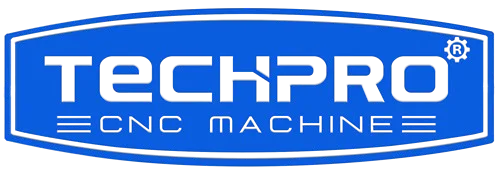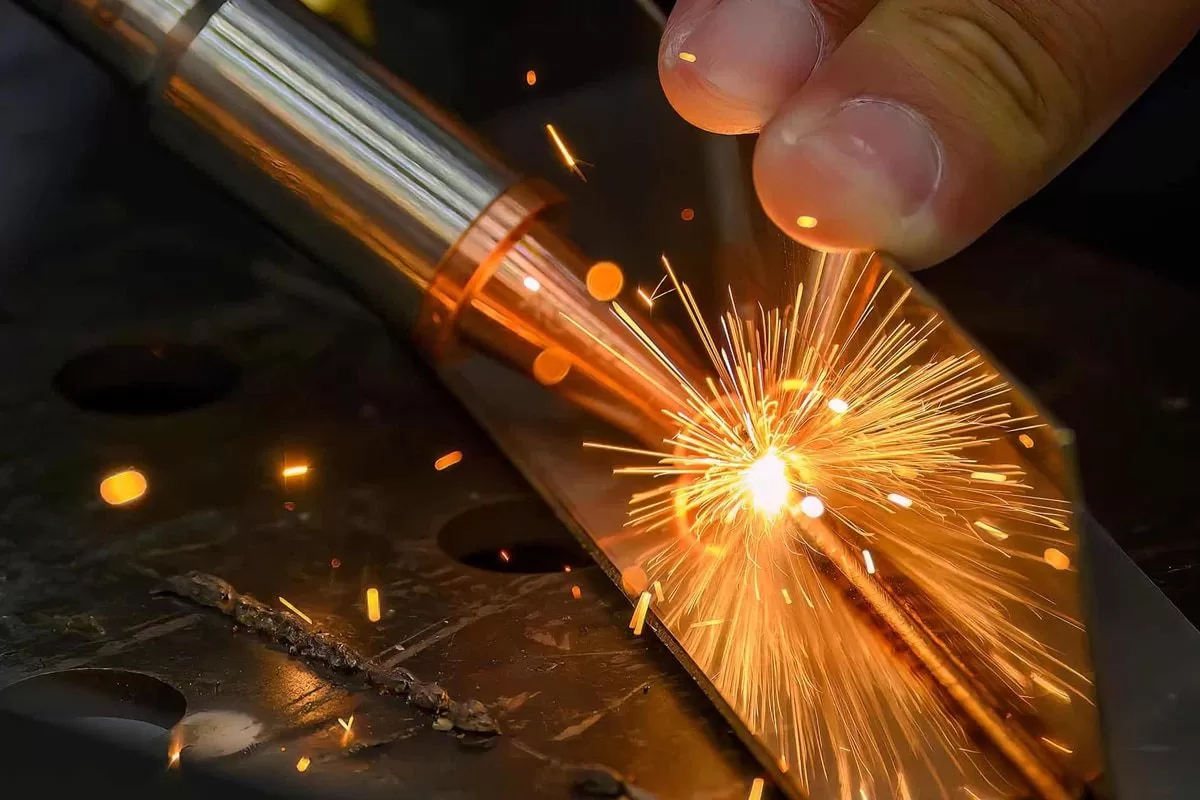You’ve probably heard about laser welding and its game-changing precision in manufacturing, but how does it actually work? As experts at TechCNC, we’ve seen laser welding transform industries with its speed and accuracy. In this guide, we’ll break down the laser welding process, explore its benefits, and show why it’s a must-have for modern CNC projects. Ready to discover how precision welding can elevate your work? Let’s get started!
What Is Laser Welding
Laser welding is a cutting-edge process that uses a focused laser beam to join materials, usually metals or thermoplastics, with incredible precision. Unlike traditional welding methods that rely on an open flame or electric arc, laser welding concentrates intense light energy into a tiny spot. This creates a clean, narrow weld with minimal distortion and heat-affected zones.
This precise control is what makes laser welding so valuable across industries. Whether it’s in automotive manufacturing, aerospace, or medical device production, the laser welding process offers fast, strong, and reliable joints. Plus, it’s ideal for working with thin materials or complex shapes where traditional welding could cause damage.
At TechCNC, we harness advanced CNC laser welding technology to deliver top-quality results. Our expertise in fiber laser welding and CNC laser systems puts us at the forefront of precision welding, offering solutions that meet today’s demanding manufacturing needs. If you’re wondering how laser welding works or how it can transform your production, keep reading to explore the process, benefits, and why it could be the right choice for your business.
How Does Laser Welding Work The Process Explained
Laser welding works by using a highly focused laser beam to melt and join materials, usually metals, together with extreme precision. The laser generates an intense, concentrated heat source that melts the edges of the parts being joined. When the molten metal cools, it forms a strong, seamless weld.
The Science Behind Laser Welding
The process relies on the laser beam welding principle, where photons from the laser light transfer energy to the material’s surface. This energy converts into heat, which melts the metal at the weld joint. Because the heat is so focused and localized, it causes minimal thermal distortion or damage to the surrounding material. This is why many call it a minimal heat welding method.
Step by Step Laser Welding Process
- Preparation: The materials to be welded are cleaned and aligned properly.
- Laser Beam Generation: A laser source—like a fiber laser—produces a concentrated beam of light.
- Focusing: The laser beam is focused with lenses onto a tiny spot on the joint.
- Melting: The energy from the laser melts the metal precisely at that point.
- Joining: The molten metal from both pieces fuses together.
- Cooling: The weld solidifies quickly, creating a strong bond.
Types of Laser Welding
- Conduction welding: The laser heats the surface, melting the materials without creating a deep weld pool.
- Keyhole welding: A high-power laser punches a hole (keyhole) in the metal, which allows deeper weld penetration, ideal for thicker materials.
- Hybrid laser welding: Combines laser welding with other methods like MIG welding to enhance speed and penetration.
Different types are chosen based on material thickness, joint design, and desired strength. For example, fiber laser welding is popular in manufacturing due to its efficiency and precision, especially in CNC laser welding setups.
Laser welding’s precise control and fast processing make it a top choice for companies focusing on welding automation and high-quality production. To learn more about the machines that support these processes, check out our automatic laser welding machine.
Benefits of Laser Welding in Manufacturing
Laser welding offers several clear advantages that make it a top choice in manufacturing across the United States. Here’s why many manufacturers prefer this precision welding method:
- High Precision: Laser welding provides extremely accurate welds with minimal distortion. This is perfect for intricate parts where tight tolerances matter.
- Speed and Efficiency: The laser welding process is fast, which means higher production rates and shorter lead times.
- Minimal Heat Affected Zone: With minimal heat input, there’s less warping or damage to surrounding materials. This reduces the need for additional finishing.
- Automation Friendly: It easily integrates with CNC laser welding systems, allowing for consistent, repeatable welds and less manual labor.
- Versatility: Laser beam welding works well with a variety of metals, including stainless steel, aluminum, and titanium.
- Clean Results: Unlike traditional welding, laser welding leaves very little spatter and no slag, reducing cleanup time.
These benefits combine to boost manufacturing quality and productivity, making laser welding a smart investment for businesses looking to stay competitive and deliver top-notch products. If you’re interested in how laser cutting compares, check out our detailed guide on plasma cutting vs laser cutting.
Applications of Laser Welding
Laser welding has become a go-to solution in many industries across the United States thanks to its precision and speed. Here are some key applications where laser welding really shines:
- Automotive Industry: Used for welding car bodies, gear components, and battery packs, especially in electric vehicles. The minimal heat welding process helps prevent damage to sensitive parts.
- Aerospace Manufacturing: Ideal for joining lightweight metals and complex parts, ensuring strong, precise joints that meet strict safety standards.
- Medical Devices: Precision welding is critical for surgical tools, implants, and medical instruments where clean, strong welds are a must.
- Electronics: Micro welding of circuits and small components benefits from the accuracy of laser beam welding, reducing heat distortion.
- Jewelry and Luxury Goods: Offers fine, detailed welds on precious metals without damaging delicate designs.
- Tool and Mold Making: Repairs and creates complex molds quickly with high repeatability.
- Energy Sector: Used in solar panel manufacturing and battery production for reliable, high-quality welds.
Each of these applications benefits from the speed, precision, and minimal heat input of laser welding. Plus, integrating welding automation improves production efficiency and product consistency.
For businesses in the US looking to invest in laser welding, TechCNC offers a range of advanced solutions like fiber laser welding systems and 3D laser welders, catering to diverse manufacturing needs. Check out their 3D laser welding and 1000 watt laser welder options for more.
Laser Welding vs Traditional Welding Methods
Laser welding stands out when compared to traditional welding methods like MIG or TIG welding. Here’s why:
- Precision: Laser welding offers much tighter control over the weld, making it ideal for small or intricate parts. Traditional welding is often less precise, which can lead to excess heat and distortion.
- Minimal Heat Input: Laser welding focuses energy in a tiny spot, reducing the heat-affected zone. This means less warping or damage to nearby materials, unlike traditional welding which can cause more heat spread.
- Speed and Efficiency: The laser welding process is faster, improving production rates. Traditional methods can be slower, especially on delicate or detailed jobs.
- Automation Friendly: Laser welding easily integrates with CNC machines and automation setups, providing consistent weld quality. Conventional welding often needs more manual skill and oversight.
- Material Variety: Laser welding can handle a wide range of metals, including thin and dissimilar materials, better than some traditional processes.
For businesses in the U.S. manufacturing scene, choosing laser beam welding over MIG or similar methods means higher quality, faster turnaround, and less rework—key factors in staying competitive and reducing costs.
Challenges and Considerations
While laser welding offers many advantages, there are some challenges and things to keep in mind, especially for businesses in the U.S. looking to adopt this technology.
-
High Initial Investment: Setting up CNC laser welding equipment can be costly. The machines and laser sources like fiber laser welding systems require upfront capital, which might be a hurdle for smaller manufacturers.
-
Material Limitations: Not all metals respond the same way to laser beam welding. Reflective materials like aluminum or copper can be tricky, needing special settings or equipment tweaks.
-
Precision Needed in Setup: Laser welding demands precise alignment and control. Small mistakes in focusing the laser or positioning the parts can lead to weak welds or defects.
-
Safety Concerns: Powerful laser beams require strict safety protocols. Proper shielding and training are essential to protect operators from eye or skin injuries.
-
Cooling and Heat Management: Although minimal heat welding reduces distortion, managing thermal effects is still critical to avoid warping on thinner parts.
Keeping these challenges in mind helps companies weigh the benefits against the costs and plan better for integrating laser welding solutions into their manufacturing process.
Why Choose TechCNC for Laser Welding Solutions
When you’re looking for reliable laser welding services, TechCNC stands out in the U.S. market. Here’s why we’re the right choice for your laser welding needs:
-
Expertise in CNC Laser Welding
We specialize in precision CNC laser welding, combining advanced fiber laser welding technology with automated processes for consistent, high-quality results every time.
-
Cutting-Edge Equipment
Our machines use the latest laser beam welding tech, ensuring minimal heat distortion and strong welds that meet tough manufacturing standards.
-
Customized Solutions
Whether you need welding automation for complex parts or simple joins, we tailor our services to fit your production goals and materials.
-
Local U.S. Support
Based right here, we provide quick turnaround times and responsive customer service to keep your projects moving smoothly.
-
Wide Range of Applications
From automotive parts to electronics and metal fabrication, our laser welding solutions handle diverse industries with ease.
Choosing TechCNC means you get advanced laser welding process know-how backed by real American support—helping your business stay competitive with precision welding solutions built for the U.S. manufacturing landscape.






